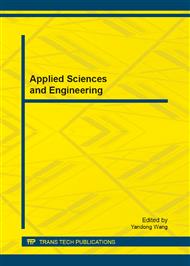p.707
p.712
p.717
p.722
p.727
p.734
p.740
p.745
p.750
Research of Resistance Capability and Equivalent Floor Live-Load of Steel Frame under Fire
Abstract:
The increasing of equivalent floor live-loads is used to describe the weakening of ultimate carrying capacity of the structure by analyzing variety of the beam’s ultimate moment and ultimate shearing force and the carrying capacity and stability of the column of steel-frame in fire, the formulas of the beam’s ultimate shearing capacity, the carrying capacity and stability of column and the equivalent floor live-loads have been derived based on these. The variety rules of the carrying capacity of beam and column of the steel-frame with different thickness of the protection layers and the equivalent floor live-load have been analyzed in the example, the results showed that different equivalent floor live-load may be used to analyze the infection of fire temperature to the carrying capacity of structure in the computations of steel-frame in fire according to different time and fire temperatures of structure members, the mechanics computations of structure would be predigested and the variety of ultimate carrying capacity of steel-frame also could be estimated.
Info:
Periodical:
Pages:
727-733
Citation:
Online since:
September 2012
Authors:
Price:
Сopyright:
© 2012 Trans Tech Publications Ltd. All Rights Reserved
Share:
Citation:


